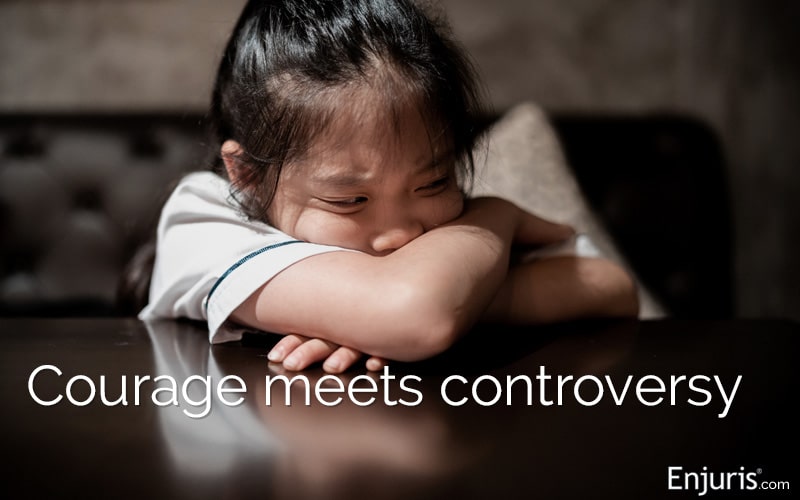
Hundreds of female gymnasts who were sexually abused by Larry Nassar, the former doctor for the United States women’s gymnastics team, reached a $380 million settlement with USA Gymnastics (USAG) and the U.S. Olympic & Paralympic Committee (USOPC) after 5 years of litigation.
Background of the Larry Nassar case
Larry Nassar worked for decades as a doctor for USAG, Michigan State University (MSU), and several local gyms around Michigan. During his time with these organizations, he sexually abused hundreds of female athletes under the guise of administering medical treatment.
Although countless complaints were made against Larry over the years, officials largely failed to act.
A detailed timeline of Larry Nassar’s career, abuses, and the various lawsuits against him is beyond the scope of this blog post. However, in order to provide context for the $380 million settlement, it’s important to review some of the key events:
- 1990. Larry sexually abused 10-year-old Trinia Gonczar while volunteering at the Twistars USA Gymnastics Club in Lansing, Michigan. Larry went on to abuse Trinia more than 840 times, according to her lawyers.
- 1996. Larry attended the 1996 Atlanta Olympics as USAG’s medical coordinator.
- 1997. A parent raised concerns about Larry to John Geddert, the founder of Twistars USA Gymnastics Club, but John failed to notify the police. John later committed suicide on February 25, 2021, after being charged with 21 counts of human trafficking and 1 count of 1st-degree criminal sexual conduct.
- 1998. A student-athlete at MSU reported concerns about Larry to her trainers and coaches, but the university failed to take any action.
- 2000. A 2nd student-athlete at MSU reported concerns about Larry to trainers and coaches, but the university failed to take any action.
- 2003. By 2003, Larry’s abusive practices were so well known that he was widely referred to as the “crotch doc” among student-athletes.
- 2008. Larry attended the Olympic Games in Beijing, China, with the gymnastics teams.
- 2014. MSU cleared Larry of any wrongdoing after another report from an MSU student-athlete who said she was sexually assaulted during a medical examination.
- 2016. Former gymnast Rachael Denhollander filed a criminal complaint against Larry with the MSU Police, alleging that she was sexually abused by Larry in 2000.
- 2016. The Indianapolis Star published an article in which Rachael Denhollander and Olympian Jamie Dantzscher accuse Larry of abuse. Larry was subsequently fired by MSU and charged with 1st-degree criminal sexual conduct with a minor for abusing Kyle Stephens, the daughter of a family friend, beginning in the 1990s when she was 6 or 7 years old. The following month, charges for possession of child pornography were added.
-
2017. Civil lawsuits were filed by 18 women against MSU and USAG alleging that Larry abused them and that the institutions didn’t properly investigate the claims. Larry’s medical license was suspended at this point.
In addition, dozens more women came forward with claims of sexual abuse, including Olympians McKayla Maroney, Aly Raisman, and Gabby Douglas.
-
2018. Larry was sentenced to up to 175 years in prison on sexual assault charges. During the sentencing hearing, 156 women made statements before the court. The entire USAG board resigned, as did MSU’s president and the school’s athletic director.
Attorneys representing USAG proposed a $215 million settlement offer. The offer was rejected by more than 140 survivors, in part, because it was contingent on those survivors releasing USAG and USOPC from any future claims.
MSU agreed to a $500 million settlement with 332 of Larry’s victims.
Olympian Jamie Dantzscher filed a civil lawsuit alleging that USAG and USOPC failed to take action regarding Larry’s abuse. Hundreds of gymnasts, including Olympians Simone Biles and Aly Raisman, joined the lawsuit as plaintiffs.
USAG filed for bankruptcy in an effort to consolidate the various lawsuits against the organization.
USAG and USOPC reach a $380 million settlement with abuse victims
On December 13, 2021, USAG and USOPC reached a settlement agreement with hundreds of student-athletes who joined the 2018 civil lawsuit.
As part of the settlement, USAG and USOPC will pay the survivors $380 million (details regarding how the money will be distributed among the plaintiffs are confidential).
In addition, USAG and USOPC will designate some of their board seats to survivors and implement $5 million worth of new policies aimed at protecting athletes from future abuse.
“This settlement is about the brave survivors who came forward, forced these organizations to listen, and demanded change,” said Michelle Simpson Tuegel, an attorney representing more than 2 dozen of the survivors.
Most of the money to satisfy the settlement will come from the insurers of USAG and the USOPC.
Can you sue for sexual abuse?
A civil lawsuit based on sexual abuse can be brought under a number of different legal theories. In some instances, both the perpetrator and the perpetrator’s employer (or some other entity) can be sued.
Keep in mind that a criminal proceeding is different from a civil proceeding. A criminal proceeding is aimed at punishing the abuser (typically with jail time), whereas a civil lawsuit is aimed at compensating the survivor for the physical, emotional and financial harm done to them.
When an act of sexual abuse is committed, the victim typically has a limited amount of time to file a civil lawsuit. This time limitation is called the statute of limitations. The statute of limitations for sexual abuse varies depending on the state where the lawsuit is filed and the age of the victim when the abuse occurred.
If you’ve been the victim of sexual abuse, consider contacting the Rape, Abuse & Incest National Network (RAINN) to get the support you need.
Struck Down: Angelica Saupe and the Dismantling of the Child Sexual Abuse Accountability Act
Learn about the impact of the Colorado Supreme Court's landmark decision on child abuse claims, find out what it means for survivors.

